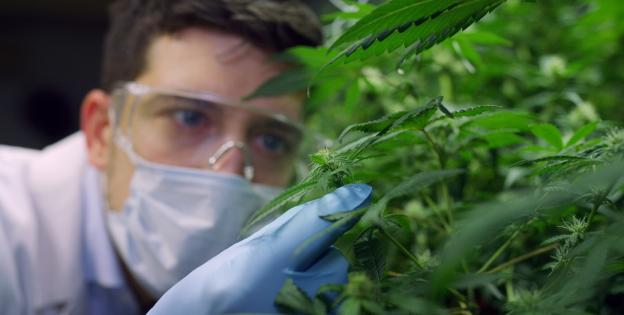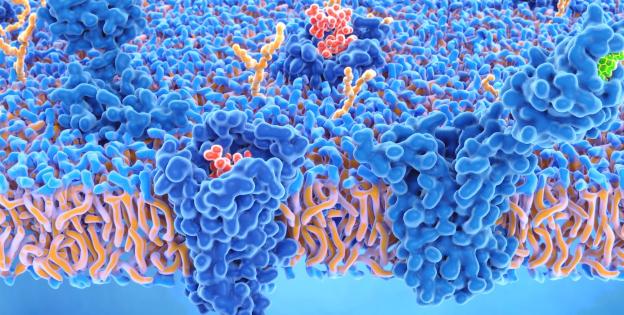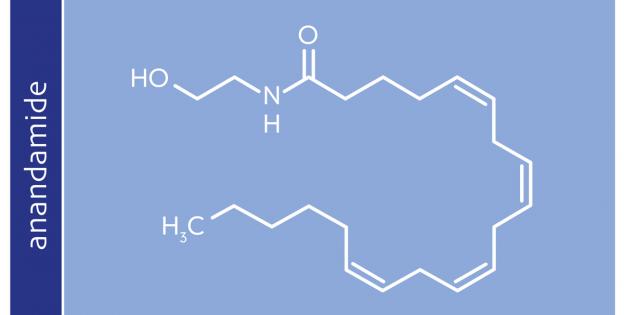- Did you know that, if it weren’t for the endocannabinoid system, the cannabis plant wouldn’t produce any effects on the human body?
- Because the human body also naturally produces cannabinoids: these are the endocannabinoids, which provide an explanation for the amazing properties of the cannabis plant.

Despite having been used as a medicinal plant for thousands of years, research on cannabis is fairly recent. In fact, it wasn't until 1992 that the endocannabinoid system was discovered in an attempt by scientists to understand the effects of cannabis on the human body.
It was in 1992 that researchers discovered endocannabinoids: a set of natural molecules similar to cannabis compounds but produced by the human body. Thus, they started to realise that cannabis produced its effects by partly imitating these endocannabinoids.
Hence, it was discovered that cannabinoids exist outside the body (exogenous), for example THC and CBD in the cannabis plant (also known as phytocannabinoids due to their plant origin), and that the human body also produces its own endogenous cannabinoids.
What is the endocannabinoid system?
The endocannabinoid system is made up of a complex network of cannabinoids and cannabinoid receptors. It also includes some enzymes that work together within our body to help maintain cell balance or homeostasis (i.e. biological harmony) in response to environmental changes. When our cells, organs and systems start deviating from their point of equilibrium, our endocannabinoid system activates to return them to normal.
Taxonomic research has revealed that the endocannabinoid system is incredibly old, having evolved more than 500 million years ago. All vertebrates (including mammals, birds, reptiles, amphibians, fish, etc) also produce endocannabinoids.
The easiest way to understand the endocannabinoid system is by imagining the receptors spread all over the human cells as if they were locks, and the cannabinoids as keys that open or close those locks. When the right cannabinoids bind to the appropriate receptors, a chemical reaction occurs and unblocks the receptors, which act as signal transducers through the cells, modulating the release of hormones and neurotransmitters and thus initiating certain physiological responses.

It's actually not that the cannabis plant produces many effects, but rather that the endocannabinoid system defines them.
To use a simile, these receptors function as 'access locks' to the interior of the cells, and when they get activated by means of the keys that fit the locks, they then tell the cells what to or what not to do. Lastly, the enzymes are responsible for decomposing the cannabinoids once they've carried out their job.
Which are the main cannabinoid receptors?
When cannabis is consumed, phytocannabinoids like THC and CBD enter the endocannabinoid system and bind to the cannabinoid receptors. The two most common receptors are CB1 and CB2, although they are intimately connected to other receptors of other substances such as the serotonin or vanilloid receptors.
Most CB1 receptors that bind to THC are located in the brain. On the other hand, CB2 receptors bind to CBD and are located in all other areas of the body.
Research studies initially suggested that the endocannabinoid receptors were only present in the brain and the nervous system, but scientists later discovered that they were also located on the skin, in immune cells, bones, fat tissue, liver, pancreas, skeletal muscle, heart, blood vessels, kidneys, and in the gastrointestinal tract. Nowadays we also know that the endocannabinoid system is related to a wide range of physiological processes, including pain, memory, mood, appetite, stress, sleep, metabolism, immune function, and even reproductive function.
Endocannabinoids are possibly one of the most widespread and versatile signalling molecules known to man. The two most widely studied endocannabinoids are anandamide and 2-AG, although there are also some other minor endocannabinoids whose popularity is starting to see the light.

What is anandamide?
The word 'anandamide' derives from the Sanskrit word 'ananda', which means 'joy' or 'bliss': an indication of its mood-enhancing properties. Also known as N-arachidonoylethanolamine (AEA), anandamide interacts with the CB receptors in the human body in a similar way to phytocannabinoids like THC.
In the 1960s the chemist Dr Raphael Mechoulam discovered delta-9-THC. Dr Mechoulam also managed to first isolate anandamide in the 1990s. He discovered that the human body produces anandamide on request, to use whenever needed to maintain homeostasis. As it is produced, anandamide binds to our cannabinoid receptors CB1 and CB2 in the same way as THC. This can greatly affect several physiological mechanisms that include appetite stimulation, mood swings, pain control, and even fertility.
A way in which anandamide contributes to this homeostatic regulation is by encouraging nervous cell development in the brain. This process is known as neurogenesis, and is essential to functions like memory or learning.
High anandamide levels have also been found in the bloodstream of people after they have done intense exercise, which corroborates the theory of the 'euphoria' or 'high' that you get after vigorous and prolonged physical activity.
What is 2-Arachidonoylglycerol (2-AG)?
2-Arachidonoylglycerol (2-AG) is the other main endocannabinoid that, together with anandamide, acts on the cannabinoid receptors in both the central and peripheral nervous system. More precisely, 2-AG is a full agonist (i.e. a chemical substance that binds to a receptor to increase its activity) of both cannabinoid receptors.
In fact, 2-AG is the most abundant endocannabinoid in the brain, with a concentration approximately 200 times higher than that of anandamide. And it is believed that, like anandamide, 2-AG has an important role in the regulation of appetite, the immune system, or the treatment of pain.
But, above all, we know that 2-AG plays a vital role in the circulatory system and affects both the heart and the blood vessels either directly or indirectly. Scientists at the University of Tokyo have also discovered that 2-AG's signalling has got a crucial role in seizure suppression. This suggests that it may also play an essential part in neurological disorders that have an impact on motor control. 2-AG has even been suggested as a key player in the development of schizophrenia, and is currently being studied for its application in the treatment of other psychiatric conditions.

Other less well-known endocannabinoids
Other endogenous cannabinoids include ether 2-arachidonoylglycerol, also known as noladin ether, virodhamine (which has been proposed as an endogenous antagonist of the CB1 receptor), and N-arachidonoyl dopamine (NADA), a vanilloid agonist with affinity to the CB1 receptors. Nonetheless, we still have a lot to learn about these minority endocannabinoids.
The human body is full of mysteries, and even though the endocannabinoid system has been evolving for millions of years, it has only been known for just over two decades. This is completely changing the picture regarding the biological processes of the human body: the endocannabinoid system could hold the answers to numerous diseases that affect humans and that currently have no defined cure.






Comments from our readers
There are no comments yet. Would you like to be the first?
Leave a comment!Did you like this post?
Your opinion about our seeds is very important to us and can help other users a lot (your email address won't be made public).